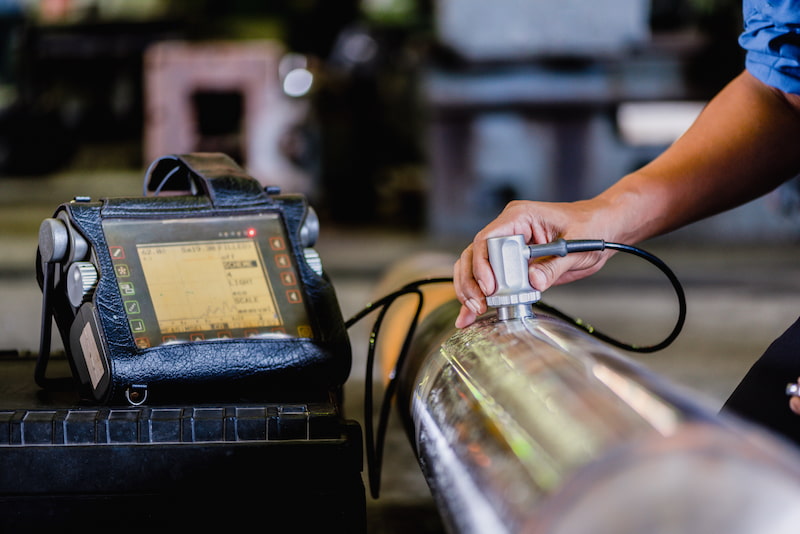In the context of a power station, Non-Destructive Testing (NDT) services play a crucial role in ensuring the safety, reliability, and efficient operation of various components and systems. Our NDT services for power stations encompass a wide range of techniques and applications, including:
Ultrasonic Testing (UT): We employ UT techniques to inspect critical components such as pipelines, pressure vessels, boiler tubes, and turbine blades. UT helps detect internal flaws, thickness variations, and corrosion in these components, allowing for timely repairs or replacements to prevent failures or leaks.
Radiographic Testing (RT): RT is used to examine welds, castings, and other structural components in power stations. It provides detailed imaging of internal defects, such as cracks or voids, enabling the identification of potential weaknesses and ensuring structural integrity.
Magnetic Particle Testing (MPT): MPT is employed to detect surface and near-surface defects in ferromagnetic materials. It is commonly used for inspecting turbine blades, generator shafts, and other critical components to identify cracks, fatigue, or stress corrosion.

Liquid Penetrant Testing (LPT): LPT is utilized to identify surface cracks, porosity, or leaks in power station components. This technique involves applying a liquid penetrant and observing any indications of defects, ensuring the integrity of surfaces and preventing fluid or gas leakage.
Eddy Current Testing (ECT): ECT is employed for inspecting heat exchanger tubes, condenser tubes, and other conductive materials. It detects defects such as corrosion, pitting, or erosion, helping to assess the remaining lifespan of the components and plan for maintenance or replacements.
Visual Inspection: Visual inspection is a fundamental technique used in power stations to assess the overall condition of components, identify obvious defects, and monitor signs of deterioration or damage. It is often complemented by other NDT techniques for a more comprehensive evaluation.
Infrared Thermography: Infrared thermography is utilized to identify temperature variations and heat patterns in power station equipment, including electrical systems, transformers, and high-voltage connections. It helps detect overheating, faulty connections, or insulation issues, enabling preventive measures to avoid potential failures or electrical hazards.
Our NDT services for power stations are performed by experienced technicians and engineers who adhere to industry standards and best practices. By employing these services, power station operators can ensure the integrity of critical components, minimize the risk of failures, and optimize maintenance strategies, ultimately enhancing the safety and reliability of their operations.
